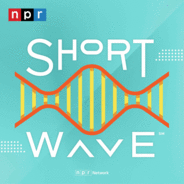Octopuses and their arms are a bit of a mystery. Not because scientists don’t know how they work; they’re boneless hydrostats, made up of groups of muscles working together and capable of bending, twisting, elongating or shortening — like a frog’s tongue, or an elephant’s trunk. But because scientists are still figuring out how most octopuses use those arms in the wild. Scientists at the Marine Biological Laboratory in Woods Hole and the marine lab at Florida Atlantic University wanted to answer that question. By analyzing videos taken in the wild, they found that octopuses seemed to prefer doing certain tasks with certain arms… and that the majority of the time, they used their front arms to explore and their back arms to get around. Researchers on the project hope that furthering our understanding of octopus behavior and movement will be useful for developing things like soft robotics.Interested in more science discoveries? Email us your question at shortwave@npr.org.Listen to every episode of Short Wave sponsor-free and support our work at NPR by signing up for Short Wave+ at plus.npr.org/shortwave.Learn more about sponsor message choices: podcastchoices.com/adchoicesNPR Privacy Policy

Wissenschaft & Technik
Short Wave Folgen
New discoveries, everyday mysteries, and the science behind the headlines — in just under 15 minutes. It's science for everyone, using a lot of creativity and a little humor. Join hosts Emily Kwong and Regina Barber for science on a different wavelength.If you're hooked, try Short Wave Plus. Your subscription supports the show and unlocks a sponsor-free feed. Learn more at plus.npr.org/shortwave
Folgen von Short Wave
1405 Folgen
-
Folge vom 19.09.2025Untangling The Science of Octopus Arms
-
Folge vom 17.09.2025What Does a Black Hole Collision Sound Like?For centuries, the primary way that astronomers studied outer space was through sight. But just ten years ago, scientists successfully established a way to ‘listen’ to our cosmos – detecting gravitational waves created by huge cosmic events that took place billions of light years away. NPR science correspondent Nell Greenfieldboyce explains how scientists detect those gravitational waves, what kind of cosmic events we’re detecting now, and what they could tell us about our universe.Interested in more stories about the cosmos? Email us your question at shortwave@npr.org.Listen to every episode of Short Wave sponsor-free and support our work at NPR by signing up for Short Wave+ at plus.npr.org/shortwave.Learn more about sponsor message choices: podcastchoices.com/adchoicesNPR Privacy Policy
-
Folge vom 16.09.2025What Do Stem Cells Mean For The Future Of Parkinson's?Parkinson’s Disease affects around a million people in the United States. And that number is on the rise, in part because our population is getting older. Dr. Claire Henchcliffe, chair of neurology at the University of California, Irvine, is one of the scientists at the forefront of Parkinson’s research. She's working toward new treatment options for Parkinson’s, including recent discoveries about the potential use of stem cells. Science correspondent Jon Hamilton dives into this research — and even a future where scientists can prevent the disease altogether — on the show with Henchcliffe. Interested in more on the future of brain science? Email us your question at shortwave@npr.org – we may feature it in an upcoming episode!Listen to every episode of Short Wave sponsor-free and support our work at NPR by signing up for Short Wave+ at plus.npr.org/shortwave.Learn more about sponsor message choices: podcastchoices.com/adchoicesNPR Privacy Policy
-
Folge vom 15.09.2025The Surprisingly Long History Of Nose JobsRhinoplasty is one of the most common facial plastic surgeries performed today. And it turns out, the ability to reconstruct a nose with living tissue has been known for a very long time – over 2500 years! But what spurred our ancestors to master this reconstructive technique? Well, there’s quite a range of answers – everything from adultery to duels and syphilis. Short Wave host Regina G. Barber speaks with bioengineer and Princeton University professor Daniel Cohen about the surprisingly long history of rhinoplasty – and how this art was lost and found throughout the ages.Want more tales of science throughout time? Email us at shortwave@npr.org.Listen to every episode of Short Wave sponsor-free and support our work at NPR by signing up for Short Wave+ at plus.npr.org/shortwave.Learn more about sponsor message choices: podcastchoices.com/adchoicesNPR Privacy Policy
